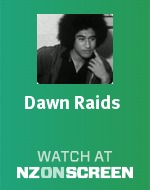Mixed emotions at Montreal
The All Blacks toured South Africa in defiance of a United Nations call for a sporting embargo of the republic. In response, 26 African nations carried out their threat to boycott the games should New Zealand attend.
The political backdrop overshadowed a creditable showing by the New Zealand team. On the track John Walker won gold in the 1500 m, following in the footsteps of Jack Lovelock and Peter Snell. Walker was the current world-record holder for the mile and his rematch with Tanzania’s Filbert Bayi following their amazing race at the 1974 Commonwealth Games had been eagerly anticipated. While Tanzania joined the boycott, Bayi was ill and would not have competed in any case. Dick Quax won silver in the 5000 m and the rowing eight followed up their 1972 victory with a bronze. The New Zealand men’s hockey team defeated the more fancied Australians in the final thanks to captain Tony Ineson’s goal and Trevor Manning’s goalkeeping heroics after he broke a kneecap late in the match.
No-nukes protests expand
In 1976 the anti-nuclear movement in New Zealand broadened into opposition to visits from American nuclear-powered and -armed vessels. These had previously been accepted by many New Zealanders as an inevitable consequence of having the United States as our principal ally. The 1976 visits of USS Truxtun and USS Long Beach attracted protest both on and off the water, with Civil Defence setting up a public safety headquarters for the duration of the visits. Similar protests (and Civil Defence responses) greeted the submarines USS Pintado in 1978 and USS Haddo in 1979. These visits heightened awareness of the risks associated with this technology. One-third of New Zealanders wanted such visits banned by 1978; more than 70% opposed them by the early 1980s.
Dawn raids intensify
With the economy in recession and unemployment rising, the spotlight was turned on ‘overstayers’ – immigrants whose temporary visas had expired. Accused of overloading the welfare system, some were detained and deported. Dawn raids on the homes of alleged overstayers by police began in 1974 and intensified in October 1976. Homes were forcibly entered in the early hours of the morning, tactics that caused outrage and brought accusations of racism. Samoan and Tongan overstayers were singled out, with people stopped in the street and asked for proof of residency. Some pointed out that most temporary immigrants were from the United Kingdom or Australia. The dawn raids cast a dark shadow over race relations in this country. Read more about the causes, impact and legacy of the dawn raids here.
The NPC begins
Until 1976 the Ranfurly Shield was New Zealand rugby’s premier symbol of provincial supremacy. That year the first National Provincial Championship was contested by the nation’s 26 provincial unions, which were divided into two divisions. The first division comprised 11 teams – seven from the North Island and four from the South. Division Two was subdivided by island. Bay of Plenty were the first Division One champions, with Taranaki winning Division Two north and South Canterbury Division Two south. In 1985 a nationwide Division Two and Division Three were created. Further changes in 2006 reflected the increasingly professional nature of rugby. Two separate competitions were created: a top tier of 14 teams competed in a professional competition (since 2010 this has been called the ITM Cup), while the Heartland Championship was contested by 12 amateur or semi-professional unions.
Other 1976 events
- The Matrimonial Property Act introduced the principle of equal sharing of the assets of a marriage in the event of its dissolution after three years or more. It did not apply to dissolved de facto relationships.
- The golden arches appeared for the first time in New Zealand at Cobham Court, Porirua. Kentucky Fried Chicken had begun the American fast food invasion of New Zealand five years earlier.
- The last sailing of the Rangatira brought to an end more than 80 years of regular passenger ferry services between Lyttelton and Wellington.
- The country’s first centralised electronic database was established in Whanganui. While some questioned the state’s right to collate information on its citizens, the Police Minister hailed it as a ‘most significant crime-fighting weapon’.
- The ‘Moyle affair’ began when Prime Minister Robert Muldoon – speaking under Parliamentary privilege – accused senior Labour member Colin Moyle of having been ‘picked up’ by the police for homosexual activity, which was then illegal.
Can you remember 1976? Add your memories and comments in the form below.








Community contributions